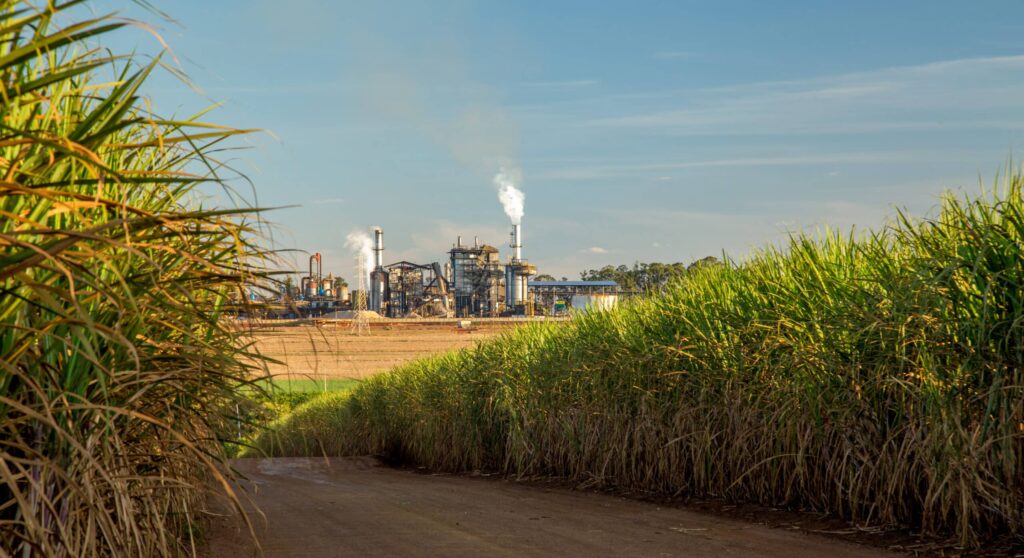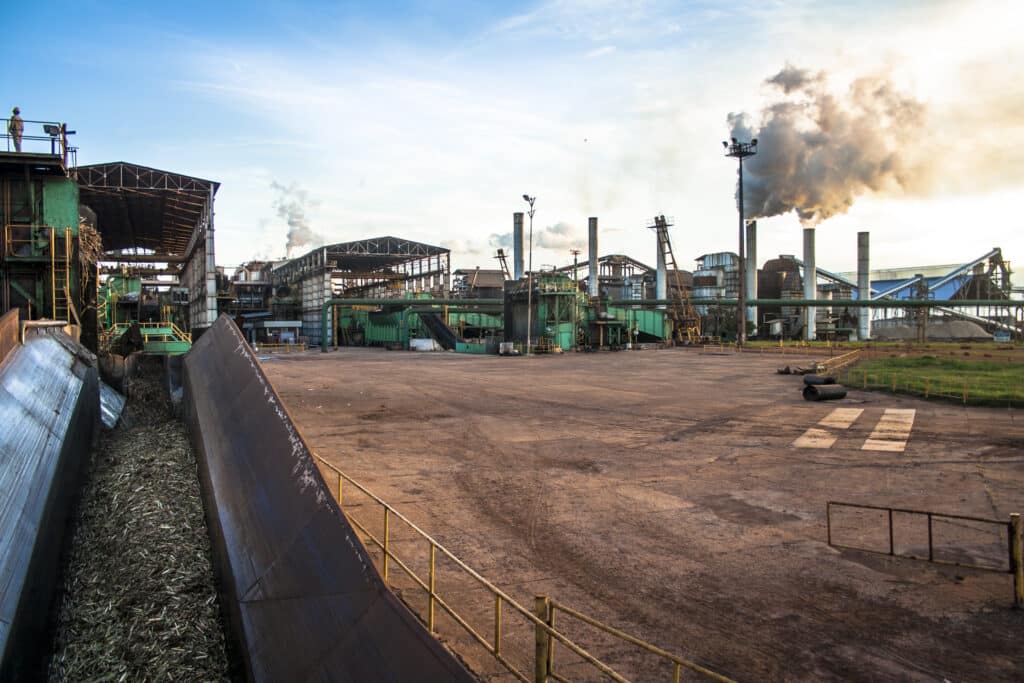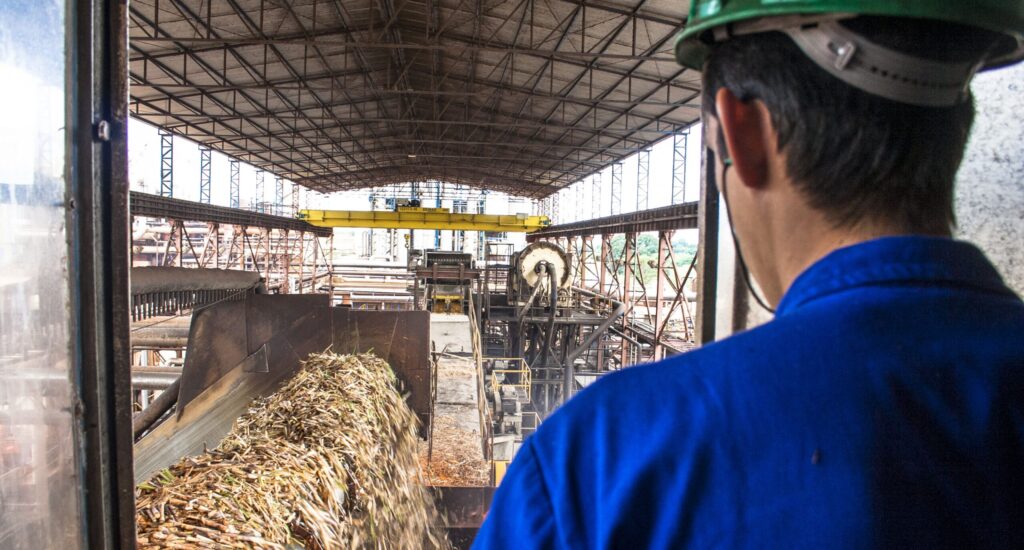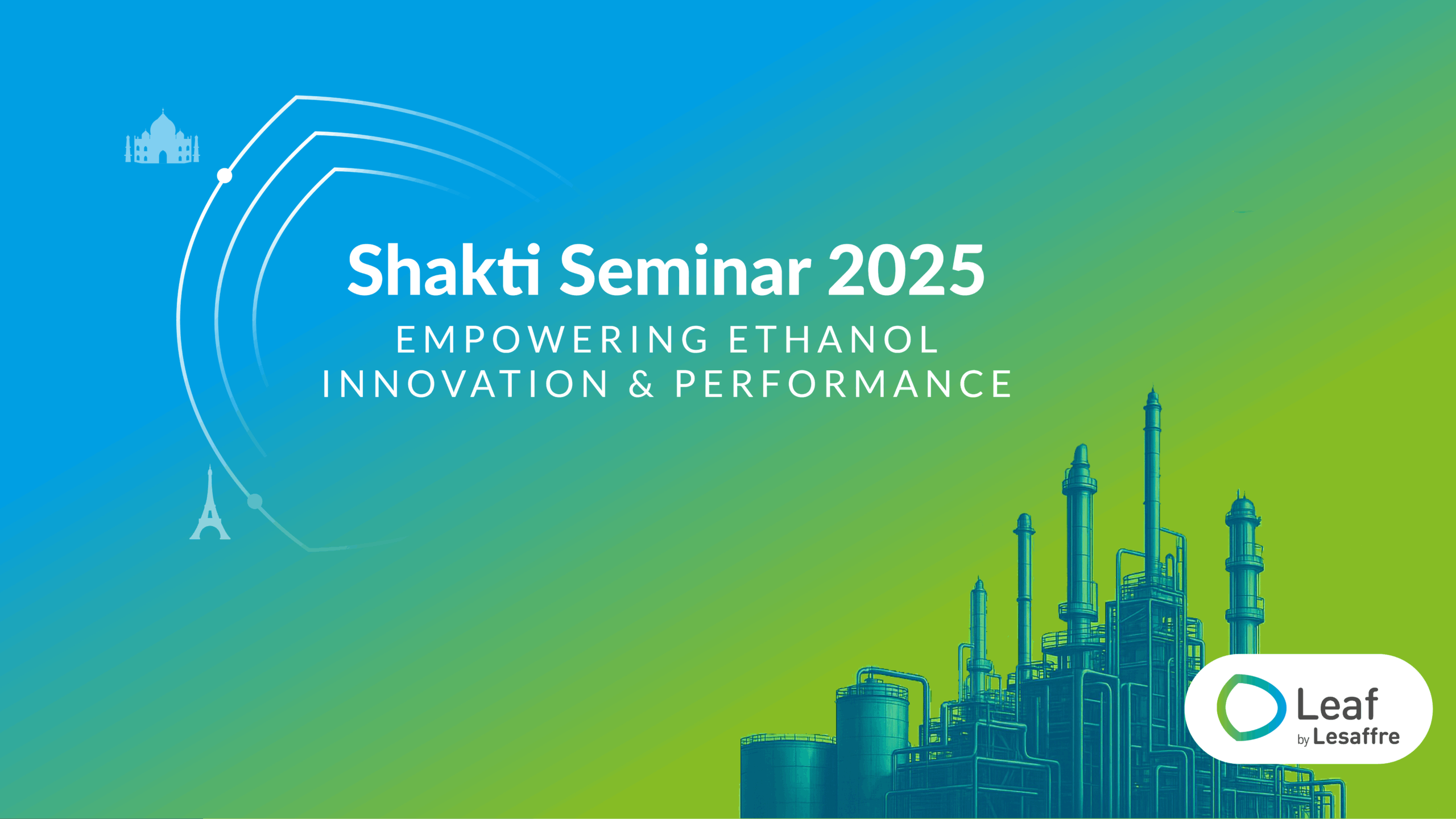Cellulosic ethanol, also referred to as “2G ethanol”, “second-generation” or “advanced biofuel” is ethanol produced from a plant fiber called cellulose. Cellulose makes up the cell wall of plant cells, it is a polymer consisting of glucose molecules linked in a long chain, often with various chemical modifications. Humans and most domestic animals cannot digest cellulose, although we do need dietary fiber for proper gut functioning.

Using cellulose for ethanol production means that inedible parts of agricultural plants such as corn and sugar cane are not wasted. Instead, they can be used for bioethanol production increasing agriculture efficiency and reducing crops’ carbon footprint by up to 85% compared to bioethanol produced from sugar and starch (1G ethanol).
Depending on the feedstock used, cellulosic ethanol reduces GHG emissions by 88% to 108% compared to gasoline. This makes 2G ethanol a sustainable fuel alternative participating in reducing air pollution.
Feedstock sources for 2G ethanol production
Whenever plants are growing in large volumes, there is a chance they can be used in cellulosic ethanol production. Virtually any plant material – waste or purposely grown – can be used as a substrate for 2G ethanol. However, various degrees of cellulose natural chemical modification make different sources more or less easy to use. Also, storing the raw biomass without degradation can be fairly difficult, let alone the absence of supply chains for such material making transportation to the utilization points difficult.
The primary sources – feedstocks – of 2G ethanol are waste biomass from crops: straw and other harvested inedible parts of the plants, including byproducts of the food industry such as sugar production from sugar beet and cane (e.g., beet pulp or bagasse).
Other sources such as municipal plant waste (e.g., lawn cuttings) and byproducts of the woodworking industry (e.g., used paper, wood chips, sawdust, etc.) are also feedstocks for cellulosic ethanol production.
One of the most promising sources of cellulosic bioethanol is purposely grown grasses such as miscanthus and switchgrass cultivated on lands unsuitable for agriculture. While miscanthus hybrids need propagation, making them more expensive, . It is also fast-growing, allowing several harvests per year.
Suitable territories for 2G ethanol production
The territory where plants suitable for cellulosic ethanol production can be grown overlaps but is wider than the main agricultural regions of the world. A significant part of the plant feedstocks can be sourced from marginal, underused, or contaminated lands.
Virtually all territory of North America can become a place for cellulosic ethanol production. Forested Canada and the northern United States already have the wood industry, producing various wooden goods and wood chips as waste products. In addition, the prairies are home to grasses and a potential feedstocks source for 2G ethanol.
The rest of the U.S. is divided into agricultural “belts” – regions with common characteristics that hint at the opportunity of using a large volume of agricultural waste – such as the corn belt, midwestern states where corn is the main crop, and the cotton and rice belts, located in the southern states.
In India, the availability of municipal solid waste (around 62 million metric tons generated annually), rice straw, and bagasse – a fibrous byproduct of sugarcane processing – in large quantities makes the country a profitable place for 2G ethanol production. Similar crops grow in China.
Likewise, the agricultural part of South America and that produces corn and sugarcane can also produce feedstocks for cellulosic ethanol, such as bagasse and corn stover. Currently, two commercial plants in Brazil – Raízen and GranBio – are using sugarcane bagasse; and three new plants are planned and being built. The use of bagasse for cellulosic ethanol is an example of existing supply chain for cellulosic feedstock with a synergy between the first generation of bioethanol production plants and 2G ethanol production plants.

Lastly, Europe grows corn, wheat, and sugarbeet. Like sugarcane, removing sugar-rich juice from beets leaves behind plant pulp that can be converted into ethanol. Also, like its North American cousin, Northern and Eastern Europe has thriving, sustainable forests that produce low-quality wood during forest maintenance.
Unfortunately, most of the biomass grown and harvested in these territories is wasted. Most of it rots or burns, producing energy as a best-case scenario, but increasing the carbon footprint. Why is it wasted? Utilization of cellulosic ethanol feedstock requires harvesting large volumes of plants and storing them before transporting them to the ethanol-producing facilities, but there are no logistic chains in most places.
Technology for cellulosic ethanol production
If cellulose consists of glucose, shouldn’t it be easily converted into ethanol?
Unfortunately, it is not that simple. Any polymer requires energy to break the bond between its constituent “bricks”, or monomers. As initially stated, cellulose makes up plant cell walls making them rigid, so cellulose is tough to break down.
And this is just the beginning of the story. Pure cellulose is relatively easy to break down in industrial conditions. As a result, many biodegradable products are made from cellulose – from compostable bags to dishwasher tablet wrappers.
In plants, cellulose molecules are interspersed with hemicellulose – branched polysaccharide, a modified form of cellulose. Another essential component of plants, primarily wooden, is lignin – a macromolecule rich in aromatic or phenolic compounds, similar to a resin. This mix of molecules requires the breaking of additional chemical bonds and releases inhibitory compounds of the broken down feedstock for conversion into ethanol.
In fact, 2G ethanol feedstocks are called “lignocellulose” (lignin + cellulose). The complex chemical composition of lignocellulose requires several stages of plant biomass conversion into cellulosic ethanol:
- Pretreatment disrupts the compact and highly rigid structure of plant biomass. At least 20% of the energy expenditure for cellulosic ethanol production falls into this stage. Pretreatment can be done using mechanical, thermal, chemical, or biological processes or their combination.
- Hydrolysis breaks chemical bonds between monomers in the cellulose and lignin and releases sugars. The least energy-demanding way to hydrolyze cellulose is using enzymes called cellulases because they work at relatively mild conditions of 45–50°C.
- Fermentation converts sugars released during the hydrolysis stage into cellulosic The sugars can have 5 carbon atoms in the molecule (xylose, arabinose) or 6 – these are the familiar glucose and fructose. While wild yeast easily ferments C6 sugars, C5 sugar fermentation requires genetically modified yeast strains. Few technologies for this are commercially available.
All three stages of the cellulose conversion into ethanol need optimization, including reducing energy consumption. When biological organisms such as yeast, fungi, and bacteria are involved, it is essential to engineer the relevant species to achieve maximum productivity. For example, the introduction of temperature-resistant species can allow the combination of hydrolysis and fermentation in one vessel.
Regulatory and political environment of 2G ethanol
The constraints of 2G ethanol – needing a significant initial expenditure of the infrastructures – make it especially important for governments to support initiatives in favor of cellulosic ethanol production. We expect the considerable production of 2G ethanol to start in regions where governments are the most favorable: so far being Europe, India, and Brazil. The sharp oil price rise in 2022 moves the development of sustainable energy sources such as cellulosic ethanol production into the foreground.
The European Economic Area, which includes European Union and associated countries, has long been aware of the environmental costs of energy production and working on its reduction. It issued the framework of the Renewable Energy Directive (REDII) and its current update REDIII. REDII requires a significant reduction of fossil fuel use, including in the transportation sector where the Advanced Biofuel Mandate aims at 3.5% of total transport energy being advanced biofuels by 2030.

While the main concerns of the European Economic Area are decarbonization and environmental impact of fossil fuels and the first generation of biofuels, India imports more than 85% of its oil. In compliance with the government initiative to reduce this figure to 62%, India oil companies are committed to significant investments into renewable energy sources, including 2G ethanol. According to the Indian Ministry of Petroleum and Natural Gas, 12 plants will be producing second-generation biofuels in the coming years.
Constraints of cellulosic ethanol production
Regarding cellulosic ethanol production, the main constraints are the absence of infrastructure for growing, harvesting, storing, and transporting feedstocks, as well as the high energy demand. The cost of 2G ethanol production, compared to the first-generation biofuels is also to be considered. In the short team, cellulosic ethanol has higher production costs than 1G. But, in the long term, it has been showed to be more competitive than 1G ethanol production, with biomass costs than can be reduced by 55%, remarkably lowering overall production costs.
Opportunities of 2G ethanol production
Despite the constraints, the production of cellulosic ethanol provides advantages that are becoming more pressing with the current cost increase of fossil fuels and energy.
While 2G ethanol production provides an environment-friendly fuel supporting transport decarbonization, it also allows a better use of agricultural productions – by using the whole plants rather than only edible parts – and forestry – by utilizing virtually all harvested biomass.
In many countries such as Brazil and the U.S., automotive fuels already contains ethanol. From a chemical point of view, there is no difference between the first and second-generation bioethanol in using and blending ethanol for transportation. In the future, the aviation industry will also be able to use ethanol as SAF, with some airlines already starting to experiment it.

Technological advances continuously improve 2G ethanol production, reduce its’ energy demand, and increase its’ output. Most E.U. governments realize the necessity of transitioning from a fossil fuel-based economy to a sustainable one, where cellulosic ethanol will play a large part. This is reflected in legislations that make 2G ethanol production increasingly attractive.









